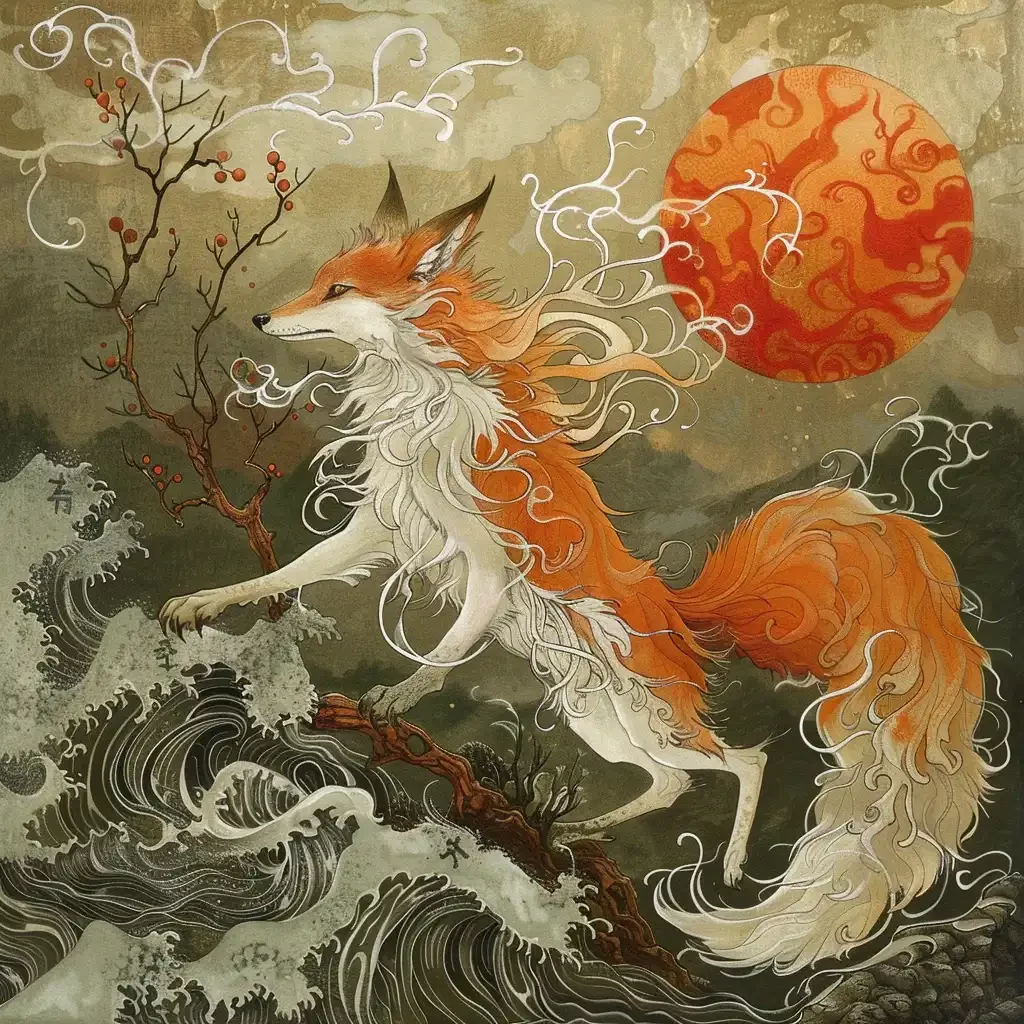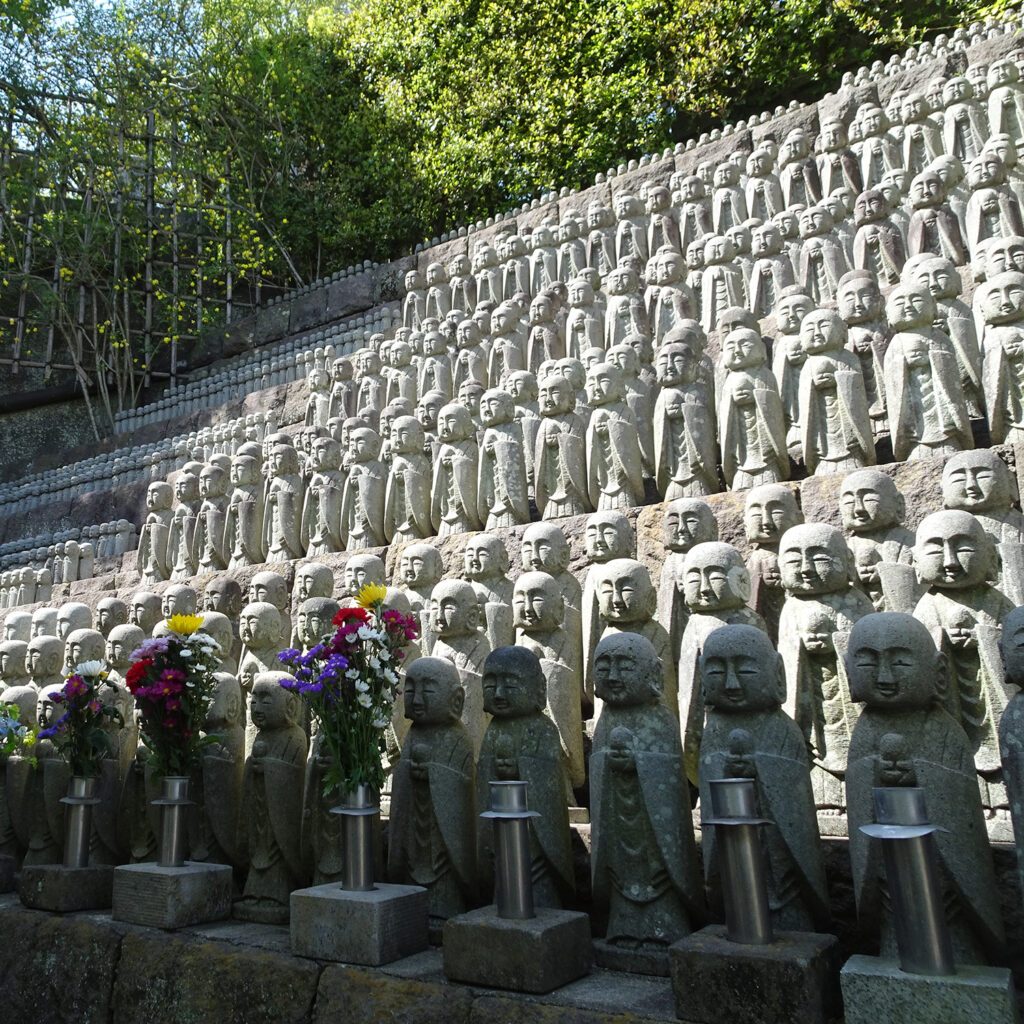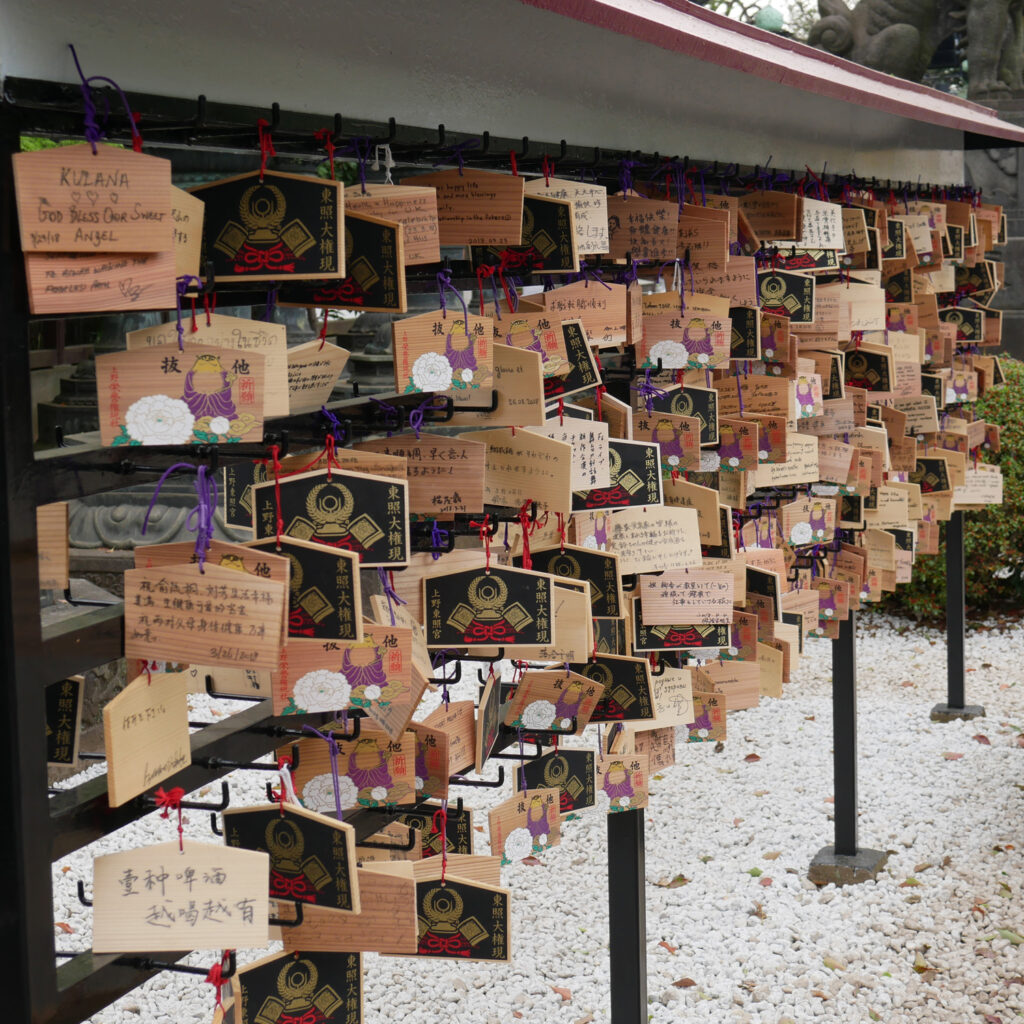The Kitsune are mysterious and fascinating foxes from Japanese mythology. In addition, they occupy an important place in the culture and legends of Japan. These mythical creatures have a reputation for being intelligent, having magical powers and the ability to transform into humans. But who are they really? What are their powers and why do they continue to capture people’s imaginations today?
Origins and Symbolism
The Kitsune have their origins in the Shinto and Buddhist beliefs of ancient Japan. The term “Kitsune” simply means a fox, but in the mythological context it takes on a much deeper meaning. Foxes have always been seen as mysterious and cunning beings. They are often associated with Inari, the kami (deity) of rice, fertility and prosperity. Inari is often depicted accompanied by white foxes, who are considered his messengers.
In Japanese culture, Kitsune symbolize both good and bad. They can be benevolent protectors or malicious spirits. This dualism reflects the complexity of human nature. Indeed, they demonstrate the idea that supernatural beings can possess multiple and contradictory aspects.
Powers and Abilities
One of the Kitsune’s most well-known powers is their ability to transform into humans. Often they take the form of beautiful and attractive young women. But they can also appear as men or even children. This metamorphosis allows them to interact with humans, often to test or deceive them. According to legend, the older a Kitsune is, the more powerful and wiser he is. It acquires new tails (up to nine) over the centuries. A nine-tailed Kitsune is considered extremely powerful and wise.
Kitsune also possess other powers such as invisibility, creating illusions, possessing humans, and even the ability to breathe fire or light. Their magical versatility makes them formidable characters in tales and legends.
Stories and Legends
Many stories feature Kitsune. Some depict them as protectors and friends of humans. While others show them in a darker light. A famous legend tells the story of Tamamo-no-Mae. She was a beautiful woman who served in the imperial court, but was actually a Kitsune. When she was discovered, she fled and became a vengeful spirit.
Another well-known story is that of Kuzunoha, a Kitsune who falls in love with a human and bears him a son, Abe no Seimei. The latter became a famous onmyoji (exorcist and mage). Before leaving, Kuzunoha leaves a poignant farewell poem. Indeed, in it, he reveals his true nature and his eternal love for his human family.
Kitsune in Modern Culture
Today, the Kitsune continue to fascinate and inspire. They appear in many modern media, including manga, anime, and video games. Their image is often used to symbolize cunning, seduction, and magical power. In popular culture, the Japanese represent the Kitsune as both benevolent spirits and mischievous beings. This thus perpetuates their legendary duality.
In conclusion, the Kitsune are emblematic figures of Japanese mythology. They therefore represent a rich combination of wisdom, power and mystery. Their ability to cross the boundaries between the spiritual world and the human world makes them fascinating characters. Because they continue to capture the imagination throughout the ages. Whether you’re drawn to their caring nature or intrigued by their mischievous side, the Kitsune offer a captivating window into the beliefs and traditions of ancient and modern Japan.
We sell Kitsune masks on our online store, discover them here.





